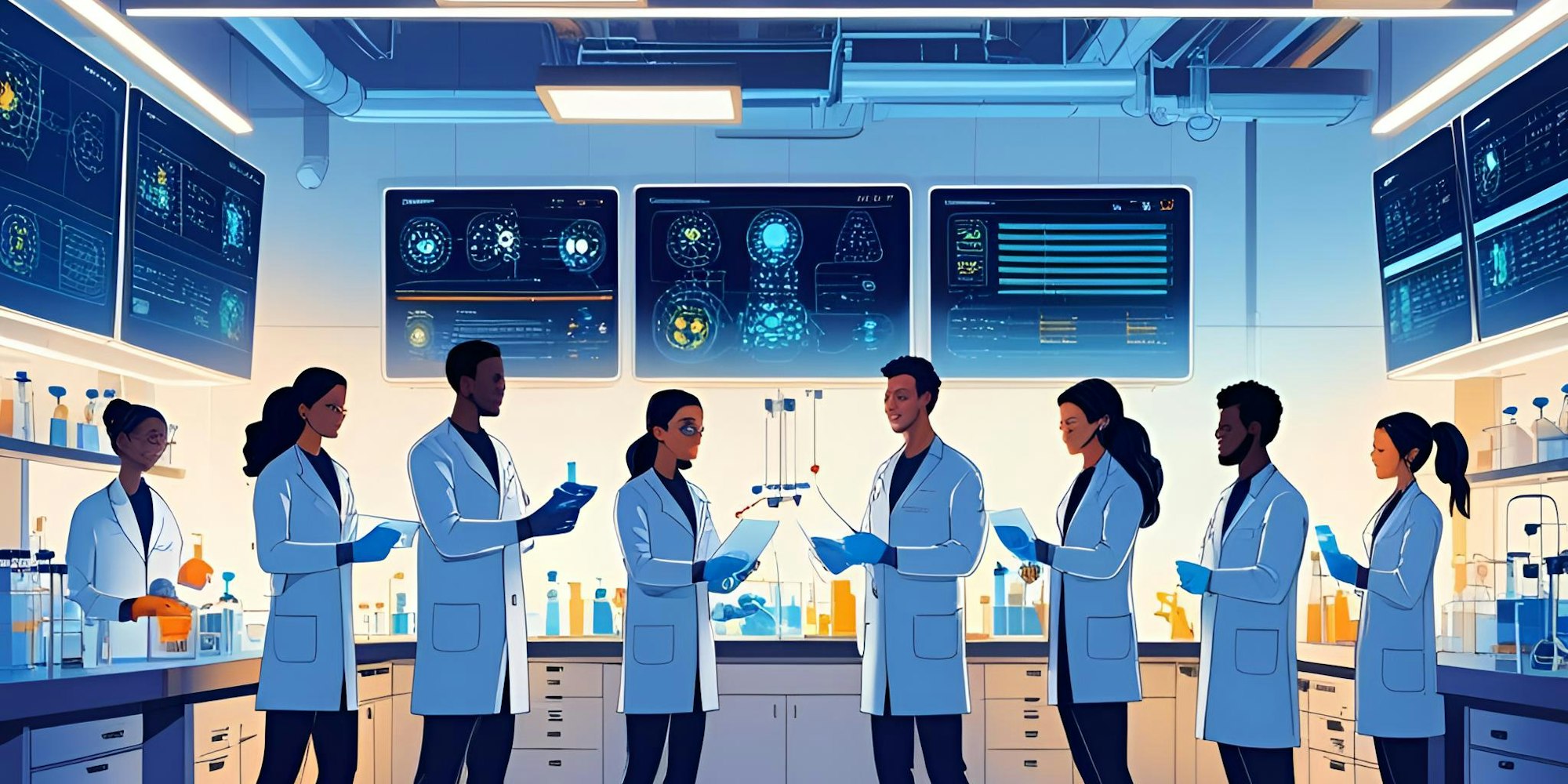Artificial Intelligence
12 min read
AI-Driven R&D from Concept to Regulatory Approval
The medical device industry is undergoing a significant transformation, driven by the integration of artificial intelligence (AI) in research and development (R&D) processes. AI in Medical Device R&D is revolutionizing traditional approaches, enabling companies to reduce development timelines by up to 40% and design iterations by 50%. This paradigm shift is redefining innovation strategies, from initial concept to regulatory submission. As the industry continues to evolve, it is essential to understand the role of AI in accelerating medical device innovation and the benefits it offers.
Digital Twin Technology: Revolutionizing Device Simulation
Digital twin modeling has emerged as a cornerstone of AI-driven medical device development, offering unprecedented simulation capabilities. For respiratory devices, these virtual replicas can simulate complex airflow dynamics, pressure distributions, and patient-device interactions across various clinical scenarios. In cardiovascular applications, digital twins model intricate blood flow patterns and mechanical stress distributions, enabling engineers to optimize device designs before physical prototyping begins. Digital Twin Simulation is a game-changer in the industry, allowing companies to reduce physical prototype iterations and accelerate design validation. A leading medical device manufacturer implemented digital twin technology for developing a next-generation heart valve, reducing physical prototype iterations by 65% and accelerating design validation by eight months. The AI-powered simulation accurately predicted valve performance under different physiological conditions, identifying potential failure modes that would have been costly to discover during physical testing.
AI-Powered Material Selection and Optimization
Advanced AI algorithms are transforming material selection processes by analyzing vast databases of material properties, regulatory requirements, and historical performance data. This capability has demonstrated significant improvements, including a 60% reduction in material selection time, a 45% decrease in validation testing cycles, and 80% accuracy in predicting long-term material performance. The system evaluates thousands of material combinations simultaneously, considering biocompatibility profiles, mechanical properties, manufacturing compatibility, regulatory compliance requirements, and cost-effectiveness. Predictive Modeling is used to identify the most suitable materials for specific applications, reducing the risk of material failure and improving overall device performance. By leveraging AI-powered material selection, companies can optimize their designs, reduce development costs, and accelerate time-to-market.
Predictive Analytics in Design Validation
AI-driven predictive analytics have revolutionized design validation by leveraging historical data and synthetic datasets. The technology enables risk assessment, automated identification of potential failure modes, real-time impact analysis of design modifications, compliance risk prediction, and performance optimization recommendations. Clinical Trial Optimization is also improved through predictive analytics, allowing companies to simulate patient responses, forecast treatment efficacy, and analyze adverse event probabilities. By using AI-driven predictive analytics, companies can reduce the risk of design failures, improve device performance, and accelerate regulatory approval. A case study demonstrated that AI-powered predictive analytics reduced design validation time by 50% and improved device performance by 20%.
Regulatory Navigation and Submission Enhancement
AI systems streamline the regulatory submission process through automated documentation, template generation, consistency checking, and real-time regulatory requirement updates. AI for Prototyping also enables companies to create virtual prototypes, reducing the need for physical prototypes and accelerating design validation. Compliance prediction is also improved through AI, with 85% accuracy in predicting regulatory challenges and proactive risk mitigation strategies. By leveraging AI-powered regulatory navigation, companies can reduce the risk of regulatory delays, improve submission quality, and accelerate time-to-market.
Cross-functional Collaboration Enhancement
AI platforms facilitate seamless integration across development teams, enabling engineering and clinical collaboration, quality and regulatory integration, and automated compliance checking. Innovation Acceleration is achieved through AI-powered collaboration, allowing companies to reduce development timelines, improve device performance, and accelerate regulatory approval. A case study demonstrated that AI-powered collaboration reduced development time by 30% and improved device performance by 15%.
Future Outlook and Strategic Considerations
Organizations must consider several key factors for successful AI implementation, including infrastructure requirements, talent development, and strategic planning. Robust data management systems, secure cloud computing capabilities, and integration with existing PLM systems are essential for AI adoption. Cross-functional training programs, AI literacy development, and regulatory expertise enhancement are also critical for successful AI implementation. By understanding these strategic considerations, companies can unlock the full potential of AI in medical device R&D and achieve innovation acceleration.
Key Takeaways for R&D Leaders
Strategic implementation of AI in medical device R&D requires a comprehensive approach, including pilot projects, clear metrics for ROI measurement, and comprehensive data management strategies. Scalable AI infrastructure and interoperable systems are essential for successful AI adoption. Regulatory compliance and data security must also be prioritized to ensure the integrity of AI-powered systems. By following these key takeaways, R&D leaders can unlock the full potential of AI in medical device R&D and achieve innovation acceleration.
Conclusion
The integration of AI in medical device R&D represents a paradigm shift in innovation strategy. Organizations that effectively leverage AI-powered solutions while maintaining focus on regulatory compliance and patient safety will lead the next generation of medical device development. The technology has demonstrated clear benefits: faster time-to-market, reduced development costs, and improved design accuracy. To stay ahead of the curve, R&D leaders must prioritize AI adoption and invest in scalable infrastructure, interoperable systems, and regulatory compliance. Take the first step towards innovation acceleration by exploring AI-powered solutions for your medical device R&D needs. Contact us today to learn more about how AI can transform your business.
#AIinMedicalDeviceRnD #PredictiveModeling #DigitalTwinSimulation #DesignValidation #ClinicalTrialOptimization
Reference Links:
https://pmc.ncbi.nlm.nih.gov/articles/PMC10720846/
https://www.sciencedirect.com/science/article/pii/S2211383524004398
Get the latest updates
We only send updates that we think are worth reading.



